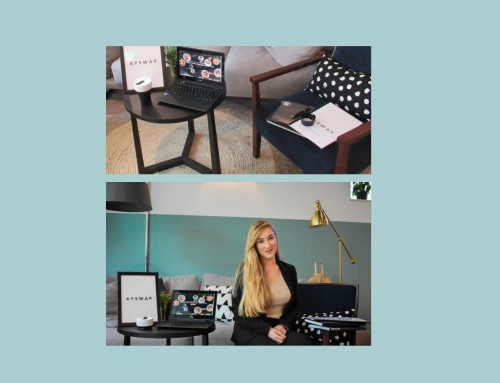DEFINITION OF VALUE
The context of value is explained through a variety of definitions in literature, however, the most common two are expressed:
- as a moral belief or
- how much profitable a certain object is.
Likewise, Cambridge dictionary (2017) defines the concept of value as something being worthy regarding its price or as a perception that frame people’s behaviour.
In Mumford’s (1981) work, a definition of the value range from the phenomenon of interest, to a description of values as our expectations, mindset and emotionally objects that reflects our opinion. He believes that values differ from person to person, as they are based on an individual’s beliefs and views of the world. Mumford (1981, p.9) explains further “…people constantly make assumptions and build premises about the world in which they live and their own relationship to this world.” For this reason, individual’s values are in general expressed differently. As a matter of fact, it is important to realise that people in groups identify concepts of value similarly. Therefore, when an individual wants outcome as a group, have judgments as the majority of people and want to achieve goals as his peers, those values turn into the mindset based on other people’s ideology.
Under these circumstances, Mumford (1981) is concerned with how individuals choose a certain value, because after all, they will shape person’s decisions. Saying that Mumford (1981) concludes that our values can be changed.
All thoughts considered, values are concepts which position our beliefs upon a certain object, quality or an event as being worthwhile. They influence our judgments, shape our culture and are subject to commitment. However, academics still did not come to an end on the definition and its aspects “…has been a subject of interest and discussion since the first Greek philosophers.” says Mumford (1981, p.9).One of the biggest challenges the fashion industry is facing today is intellectual property (IP), a division of a labour work, technology, globalisation and sustainability issues.
However, academics still did not come to an end on the definition and its aspects and “…has been a subject of interest and discussion since the first Greek philosophers.” says Mumford (1981, p.9).
CREATIVE INDUSTRY
Creative industries link together creative arts and the cultural industries. They present art as a cultural status in a new way through entertainment by combining heritage and commercial market. (Hartley, 2008, p.6)
Barrowclough and Wright (2008, p.3) explain that creative industries are based on two main principles, such as
- creativity & ideas
- their execution
Authors are critical that creative industries are often perceived in public as economic industries rather than cultural industries. After all, creative industries open new avenues, especially for markets that are still developing. They are a result of investment in knowledge and creativity and are able to implement ideas into more innovative approaches than other traditional sectors (Barrowclough and Wright, 2008, p.12).
Ken Robinson is convinced that intelligence can be seen in a variety of forms and explains further that creativity is a process that brings the value of having an original idea, therefore it should be treated with respect as other creative disciplines that brings value to the economy.
FASHION INDUSTRY & CREATIVE ECONOMY
Fashion industry creates new ways of commercial, cultural values as it earns profit from the creative skills, workforce and intellectual property while executing ideas in a commercially profitable way.
The importance of fashion design as a creative industry is addressed in International Journal of Fashion Design, where Shin (2014) argues that fashion designers bring big value to the society and national economies. She also confirms Robinson’s (2006) theory that creativity is key in education and fashion as an industry should be as important subject at universities as other disciplines.
Shin (2014) is concerned about how fashion students are encouraged to build their careers in commercially oriented companies rather than being led to become university professors. Hence, she argues that fashion design and other creative industries are essential for educational purposes and better individual’s life experience and that society should continue to nurture creativity in any kind of discipline (Shin, 2014).
The importance of the creativity in a long run was also mentioned by Hartley (2008, p.1), who said:
“Creativity will be the driver of social and economic change during the next century.”
It can be seen how the above-mentioned authors encourage individual’s creativity, skills, knowledge and talent, which might be the main driver for new jobs opportunities and profit in the creative economy.
FASHION’S ECONOMIC
Fashion’s economic contribution boost for 22% in 2014 in the UK, as stated here, whereas the direct value of fashion industry brought to the UK economy £26 billion, stated British Fashion Council. In terms of wider contribution to the UK economy, fashion industry added to over £46bn in 2014, believe Oxford Economics. Considering globally, womenswear industry is supposed to be valued 621 billion dollars and menswear industry 402 billion dollars (here).
VALUE IN FASHION DESIGN
+
Values in fashion designing as a creative industry can be seen in the way industry links together cultural values, which further identifies nation’s value. With this intention, fashion designing can then create a product combining all those values and expresses a national identity through the clothes and bring economic values by providing the profit on a global level.
Fashion design as a procedure can also bring value in aesthetic, which can inspire other creative industries or provide new ideas.
Jackson and Shaw (2006, p.208) said that a good idea does not die if it is not used immediately, but can be used in the future.
–
Globalisation in a way blurred differences between classes in terms of fashion trends, however, it seems that by the same token is happening with the originality.
Designers around the globe have the same access to the information and technology that allow designers and consumers to portrait the same style, which leads to trends losing its value. “Trends in, and of, themselves, have no value. It is the interpretation and application of trends that releases potential to any given individual or company”, explain Jackson and Shaw (2006, p.207).
The fashion industry is developing rapidly and global brands are constantly convincing consumers what kind of lifestyle they should live. On the one hand, as a result, consumers adopt those values, that they see and take those values as theirs, even if at the beginning this was not in what they believed in or like a certain trend.
On the other hand, big brands started to reflect values of online influencers to enter a mass market and in a way changed their own values in order to attract more customers.
The recent example is Dolce & Gabanna, who invited online ‘influencers’, fashion bloggers, celebrity kids rather than models. This lead to question if the show really portrayed skills of designers and creativity or was is more to attract consumers and entering the millennial mass market? (here)
“Whether that will be to the long- term economic and social benefit of the nation as a whole remains to be seen.” (Jackson and Shaw, 2006, p.103).
REFERENCES









